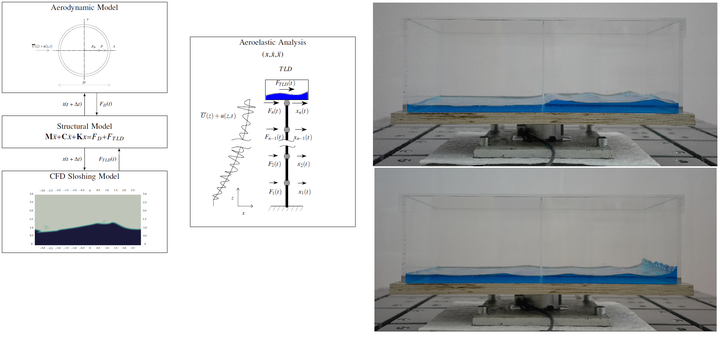Coupled mumerical simulation of liquid sloshing dampers and wind-structure simulation model

Abstract
Long-span bridges, high-rise buildings, chimneys, or wind turbines are often susceptible to wind-induced vibrations due to their high flexibility and lightweight. Therefore, these structures should be carefully designed to sustain the wind loads. Employing robust solutions for vibration mitigation, such as tuned liquid dampers (TLDs), enables energy dissipation at reduced structural and maintenance costs. This study presents a numerical coupling methodology for evaluating the wind-induced response of slender vertical structures that include a TLD. The methodology is based on coupling a Computational Fluid Dynamics (CFD) model of a TLD, a semi-analytical aerodynamic force model, and a structural model. The coupling is realized in a time-domain fashion by continuously exchanging sloshing forces, aerodynamic forces, and structural response. The highlight is the use of the volume of fluid (VOF) method as a CFD strategy to represent the sloshing damping forces, including an experimental validation. The methodology is applied to (i) a chimney-type structure to mitigate the buffeting and vortex-induced vibrations and (ii) a high-rise building to reduce the acceleration buffeting response for human comfort. In both cases, strategy for TLD predesign is employed based on free- and forced-vibration analysis, an equivalent tuned mass damper model, and wind vibrations, respectively. The results of the dynamic analyses show that there is a significant reduction in structural response for both cases. The outcome of this study is intended to showcase the applicability of CFD for TLD predesign and modeling nonlinear sloshing forces during dynamic analysis as an alternative to experiments. Thus, it is intended to serve academics as well as practitioners.